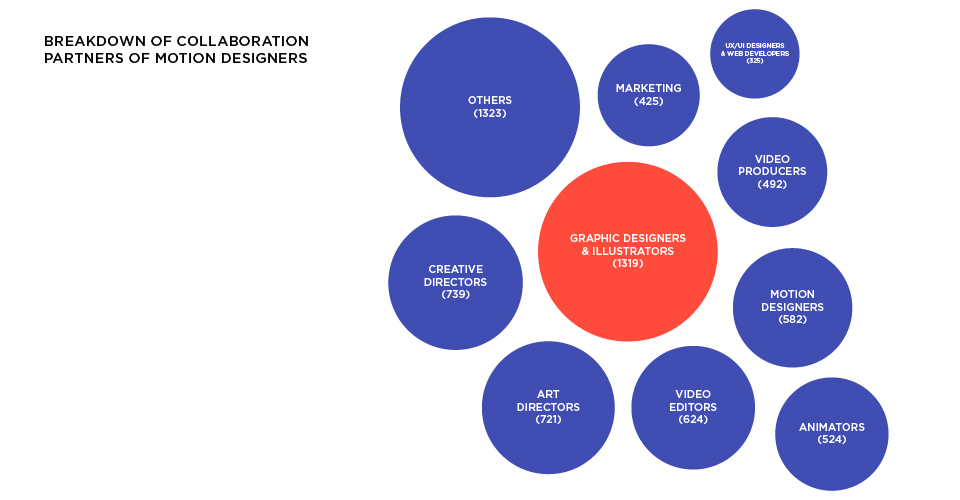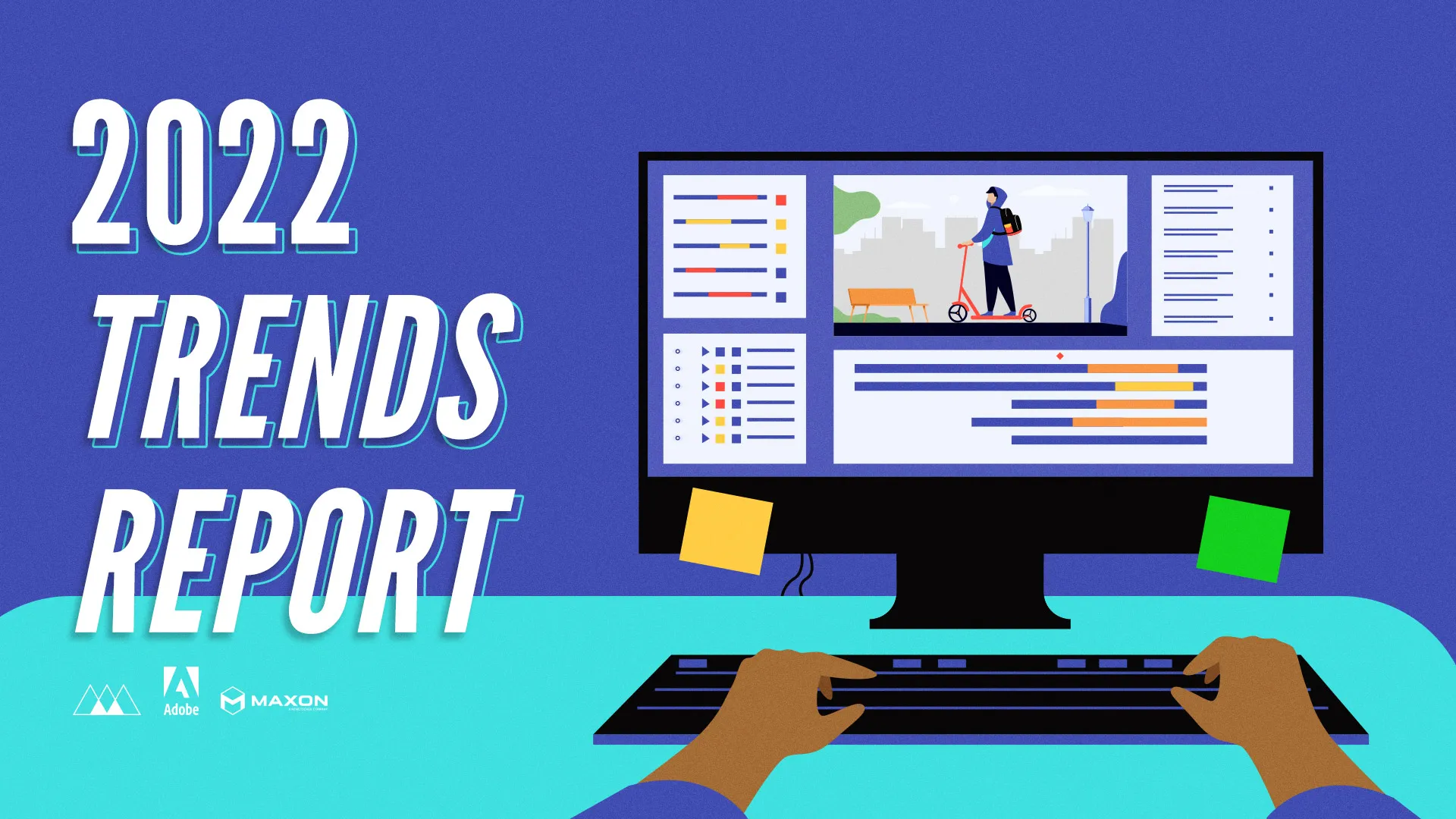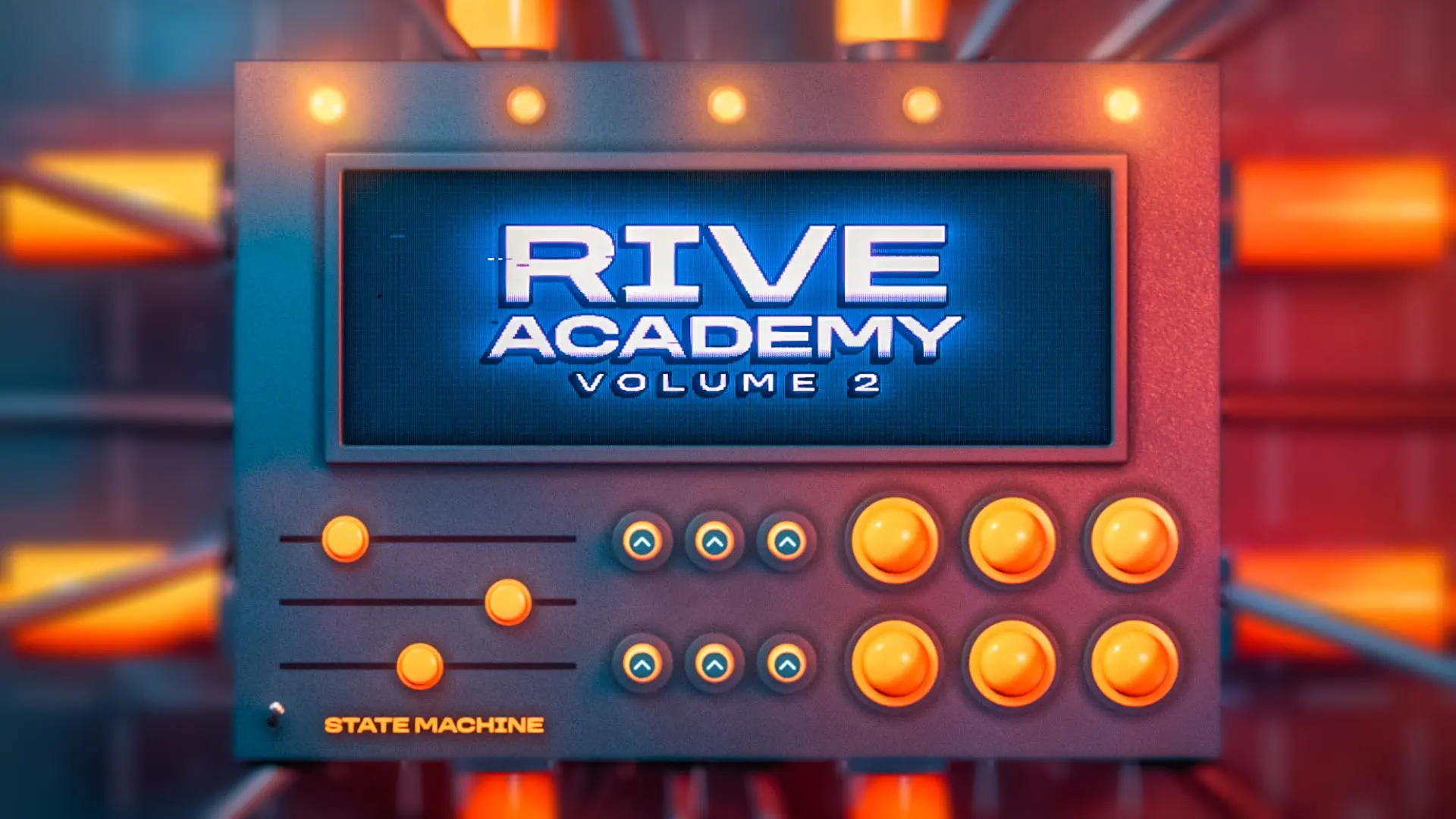The world of Design & Animation is rapidly evolving, so we surveyed artists from around the world to see what's coming next.
Just a decade ago, motion design still felt like a small club you could join if you did a certain type of work. Now, in 2021, we are a fast growing community in the hundreds of thousands. Our work can be seen in advertisements, in blockbuster video games, in UX / UI design, in AR and VR, and in the biggest Hollywood movies. At the same time, motion designers have carved out a new niche in the more traditional art landscape. With such rapid growth, we wondered what was next for the industry, so we teamed up with Adobe and Maxon to ask you.

Skills that were previously held by individuals who had the title “motion designer” are now spread out and expected from lots of creatives, particularly in marketing, graphic design, editing, social media, and UX. Every year, we ask artists from around the world a few questions to help get a sense of where the industry is at and where it is headed next. It's easy to forget that we are also professionals working in a business, and understanding trends can set us up for future success. As you look through the following graphs and discussions, remember that these "data points" represent your peers, your mentors, and your competitors.
In this article, we'll discuss:
- Educational trends in design and animation
- Work trends in design and animation
- Software trends in design and animation
Look Ahead to 2022 Industry Trends Report
While we have some analysis to help you understand the data, this is useful information to keep right on your desktop. That's why we compiled a flashy PDF just for you. Grab it for free below.
ENROLL NOW!
Acidbite ➔
50% off everything

ActionVFX ➔
30% off all plans and credit packs - starts 11/26

Adobe ➔
50% off all apps and plans through 11/29

aescripts ➔
25% off everything through 12/6
Affinity ➔
50% off all products

Battleaxe ➔
30% off from 11/29-12/7
Boom Library ➔
30% off Boom One, their 48,000+ file audio library
BorisFX ➔
25% off everything, 11/25-12/1

Cavalry ➔
33% off pro subscriptions (11/29 - 12/4)

FXFactory ➔
25% off with code BLACKFRIDAY until 12/3

Goodboyninja ➔
20% off everything

Happy Editing ➔
50% off with code BLACKFRIDAY

Huion ➔
Up to 50% off affordable, high-quality pen display tablets

Insydium ➔
50% off through 12/4
JangaFX ➔
30% off an indie annual license
Kitbash 3D ➔
$200 off Cargo Pro, their entire library
Knights of the Editing Table ➔
Up to 20% off Premiere Pro Extensions
Maxon ➔
25% off Maxon One, ZBrush, & Redshift - Annual Subscriptions (11/29 - 12/8)
Mode Designs ➔
Deals on premium keyboards and accessories
Motion Array ➔
10% off the Everything plan
Motion Hatch ➔
Perfect Your Pricing Toolkit - 50% off (11/29 - 12/2)

MotionVFX ➔
30% off Design/CineStudio, and PPro Resolve packs with code: BW30

Rocket Lasso ➔
50% off all plug-ins (11/29 - 12/2)

Rokoko ➔
45% off the indie creator bundle with code: RKK_SchoolOfMotion (revenue must be under $100K a year)

Shapefest ➔
80% off a Shapefest Pro annual subscription for life (11/29 - 12/2)

The Pixel Lab ➔
30% off everything
Toolfarm ➔
Various plugins and tools on sale

True Grit Texture ➔
50-70% off (starts Wednesday, runs for about a week)

Vincent Schwenk ➔
50% discount with code RENDERSALE

Wacom ➔
Up to $120 off new tablets + deals on refurbished items



Download the Free 2022 Industry Survey PDF
Educational Trends in Design and Animation
Do you need to attend Art School to have a successful career in design and animation?

Newer members of the artistic community often worry that they lack the credentials to earn their place among the rest of their peers. They think that since they didn’t attend some prestigious art school or earn a creative degree, they won’t have the same opportunities to advance as others. Simply put, this is nonsense.
First of all our industry is stacked with incredible artists that never graduated—or even attended—a 4-year institution. Even if you’re comparing yourself just to those artists that did go to school, over 75% of the industry didn’t specifically go to an art university.
Formal Online Training

Let’s face it: The old paradigm of education is long gone. While there are a number of benefits to a formal, university-style setting, you can learn basically anything online. With our industry specifically, classrooms and lectures are far from the most effective forms of skill training.
Out of over 2000 motion designers surveyed, nearly one third chose School of Motion as their prime source for online training! While we’re humbled to be seen as such a valuable resource, it also means we still have work to do in order to support our community.
This also means that more and more artists around the world are using widely accessible tools to learn new skills and advance their careers. It levels the playing field so that anyone, no matter their situation, can stand on equal footing with the top designers in the industry.
The last few years have seen a number of industries embracing remote and distributed workforces, which has opened the doors for a wider community of artists. Let’s see how 2021 fared for studios and freelancers.
What’s the employer industry breakdown of respondents who work at an in-house creative or marketing team?

While our industry is still heavily involved in arts and marketing, you can see that motion graphics has become ubiquitous across a huge range of businesses. This means more opportunities for new creators, and more doors to get your foot into.
What job titles do designers and animators have in 2021?
Then of course we come to the age-old question: what are we calling ourselves this year. We at School of Motion tend to lean into the belief that a rose by any other name would smell as sweet, but it certainly helps to have a cohesive nomenclature when it comes to building your resume.

While “Motion Designer” still elicits a few raised eyebrows from folks unfamiliar with our work, it has grown into the most common and acceptable term to describe the magic we do.
How many full time artists work freelance on the side?
If you’ve hung around School of Motion for more than a few articles (or spent even 30 seconds in an elevator with Joey), you know that we are MAJOR supporters of the freelance community. We might have even written an entire manifesto on the subject. So how does that passion translate into reality?

As you can see, artists working as in-house designers still work freelance to the tune of roughly two thirds of those surveyed. Look at this as a sign that there is simply so much work to go around that you can find a freelance gig if you try. There are plenty of companies out there that don’t need an in-house designer or animator, but they still need top quality work. All you need to do is make yourself available and show them how it’s done.
What kind of projects do designers and animators work on?
Designers and animators work on just about anything involving motion graphics, from character animation to UI to virtual reality. Let’s take a look at the breakdown of average projects artists are handling every day.

While this is a busy graph, it represents just how diverse our industry really is. From advertisements to sports graphics to video games, MoGraph artists are at all levels of the industry. And it doesn’t matter if you’re looking for in-house or sticking to freelance; there are opportunities to do the work you love everywhere.
And it doesn’t matter how you classify yourself. Whether you’re a motion designer…

...a graphic designer…

…a video editor…

...or a Creative Director.

How many artists collaborate with others?

We have a thriving global community of like-minded artists. While there are plenty of designers creating incredible work all on their own, we’ve also seen some amazing collaborations within the industry.

Collaborations can happen for a variety of reasons. Maybe you’re building a more complex animation and need someone skilled in expressions. Perhaps your 3D game is on point, but you’re still new at video editing. And artists collaborate A LOT, with creatives off all skills and disciplines.
Of course, one of the biggest questions for artists in 2022 is: what software should I use? Is there some new killer app that everyone in the industry already knows about? Well, lucky for you, some of the tried-and-true tools of the trade remain just as popular and effective as ever.

By a—ahem—significant margin, After Effects is still the most popular software for motion graphics. Adobe has put in a number of welcome new features in recent updates, and it looks like we’ll be keying frames and dropping in some slick vignettes throughout the new year.

For the second most used software, the Adobe Creative suite is still dominating their hard drive space. What isn’t surprising, at least to us, is that nearly 17% of artists surveyed also work in Cinema 4D. Maxon’s premiere 3D software is an incredibly powerful and valuable tool for artists at any stage of their career.
But what about a more specific segment of the community? What about folks that specifically identify as Motion Designers?

Yeah, After Effects is still number one by a mile. Look, there are other options for software out there, but Adobe has risen to its monolithic scope by putting out solid programs for years. It’s part of the reason so much of our industry (and, by and large, School of Motion) revolves around After Effects.

So if you still aren’t working in After Effects...well, now would be a good time to get started.
What is also completely unsurprising is how many motion designers use Photoshop nearly as often as After Effects. AE is a powerful tool for motion graphics, but Ps simply has more finesse when it comes to fine-tuning an image. A chainsaw can cut for sure, but it’s not the best tool for slicing a cake. Illustrator is right up there as well, as it’s vector-based design allows for precise and scalable creations that transfer incredibly well into an animated project.
What software should designers and animators learn next?
There is the million dollar question. We wanted to know what artists around the industry are learning so we could see the trend for the future. The results shouldn’t surprise anyone. One of the biggest trends we’ve seen, across creative of all shapes and sizes, is an emphasis on 3D.

3D is the name of the game. From video games and movies to grocery store commercials, everyone wants to see detailed 3D assets animated with a sharp style. Cinema 4D remains one of the most powerful tools of the trade, but we’re also seeing some amazing developments from the free-to-use side of the house.
Unreal Engine 5 is amazing, with the potential to bring real-time rendering to the masses. Blender, with some very wealthy backers (like Apple) and an incredibly engaged community, is giving artists a free option that looks more and more appealing.
Now is a great time to get started in the world of design and animation
While we are understandably biased, we can’t help but look at this survey and think it is a great time to get into design and animation. There are tons of companies out there looking for skilled artists, practiced animators, and design professionals. If you’re excited to try your hand at this creative career, we know just where you should start: After Effects Kickstart!
After Effects, as you saw above, is THE software for motion graphics design and animation. This is where your journey begins, and it only gets better from there. Over an intensive few months, industry veteran Nol Honig will take you from absolute beginner to budding professional. You will be blown away by what you’re able to create for your final project.




